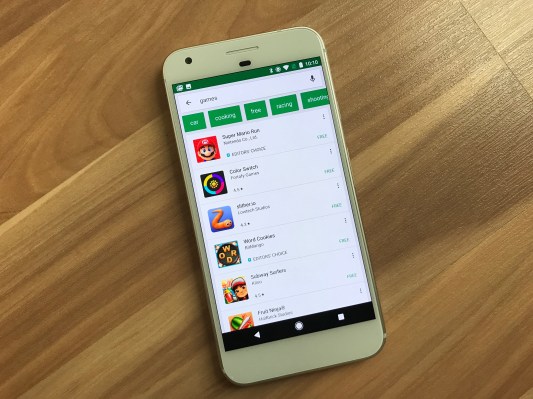Google Play has generated more than twice the downloads of the iOS App Store, reaching a 70 percent share of worldwide downloads in 2017, according to a new report from App Annie, released in conjunction with the 10th anniversary of the Android Market, now called Google Play. The report also examined the state of Google Play’s marketplace and the habits of Android users.
It found that, despite the large share of downloads, Google Play only accounted for 34 percent of worldwide consumer spend on apps, compared with 66 percent on the iOS App Store in 2017 — a figure that’s stayed relatively consistent for years.
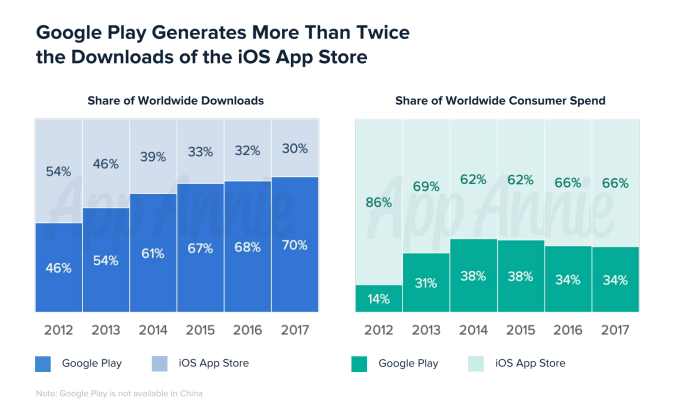
Those numbers are consistent with the narrative that’s been told about the two app marketplaces for some time, as well. That is, Google has the sheer download numbers, thanks to the wide distribution of its devices — including its reach into emerging markets, thanks to low-cost smartphones. But Apple’s ecosystem is the one making more money from apps.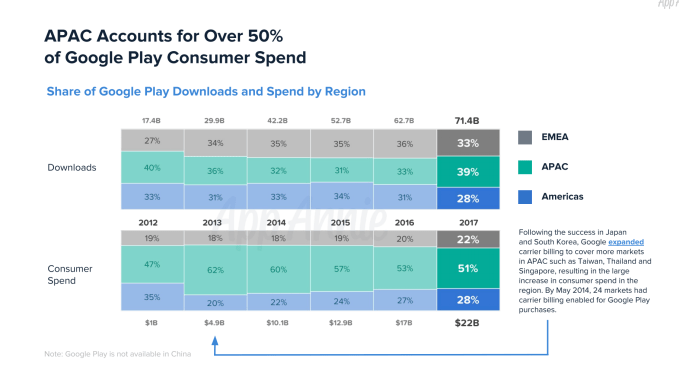
App Annie also found that the APAC (Asia-Pacific) region accounts for more than half of Google Play consumer spending. Japan was the largest market of all-time on this front, topping the charts with $25.1 billion dollars spent on apps and in-app purchases. It was followed by the U.S. ($19.3 billion) and South Korea ($11.2 billion).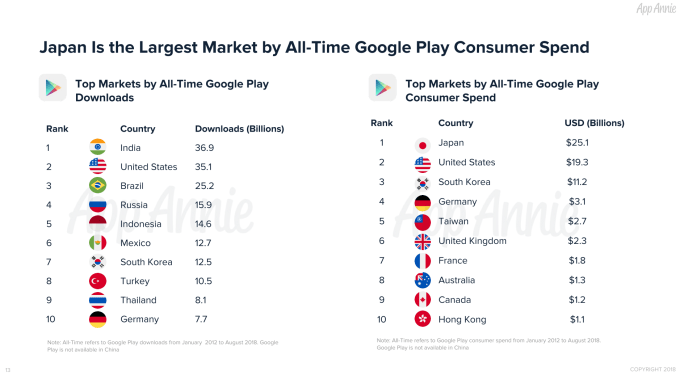
The firm attributed some of Google Play’s success in Japan to carrier billing. This has allowed consumer spending to increase in markets like South Korea, Taiwan, Thailand and Singapore, as well, it said.
As to what consumers are spending their money on? Games, of course.
The report found that games accounted for 41 percent of downloads, but 88 percent of spend.
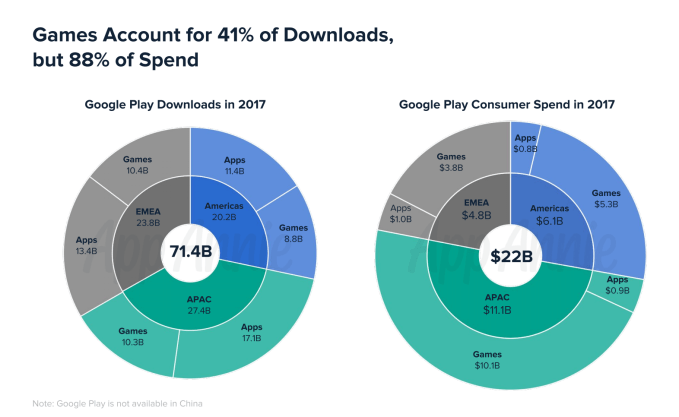
Outside of games, in-app subscriptions have contributed to revenue growth.
Non-game apps reached $2.7 billion in consumer spend last year, with 4 out of the top 5 apps offering a subscription model. The No. 1 app, LINE, was the exception. It was followed by subscription apps Tinder, Pandora, Netflix and HBO NOW.
In addition, App Annie examined the app usage patterns of Android users, and found they tend to have a lot of apps installed. In several markets, including the U.S. and Japan, Android users had more than 60 apps installed on their phones, and they used more than 30 apps every month.
Australia, the U.S. and South Korea led the way here, with users’ phones holding 100 or more apps.

The report also looked at the most popular games and apps of all time by both downloads and consumer spend. There weren’t many surprises on these lists, with apps like those made by Facebook dominating the top apps by downloads list, and subscription services dominating top apps by spend.
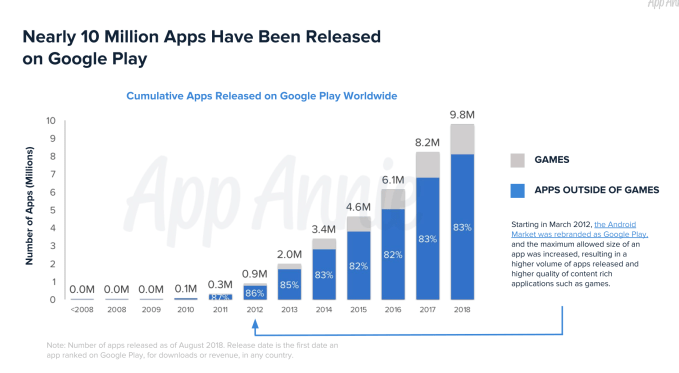
App Annie also noted Google Play has seen the release of nearly 10 million apps since its launch in 2008. Not all these remain, of course — by today’s count, there are just over 2.8 million apps live on Google Play.
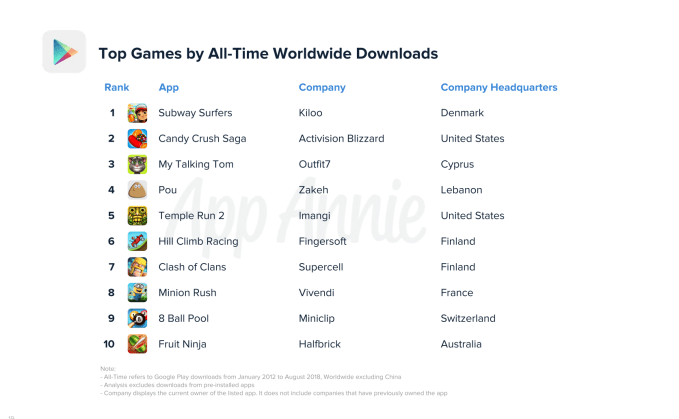
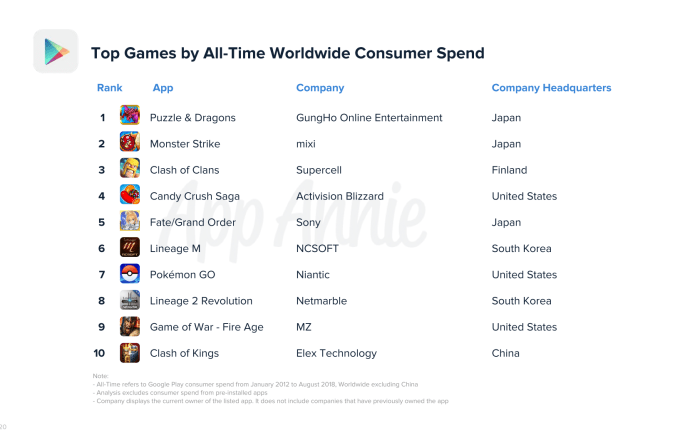

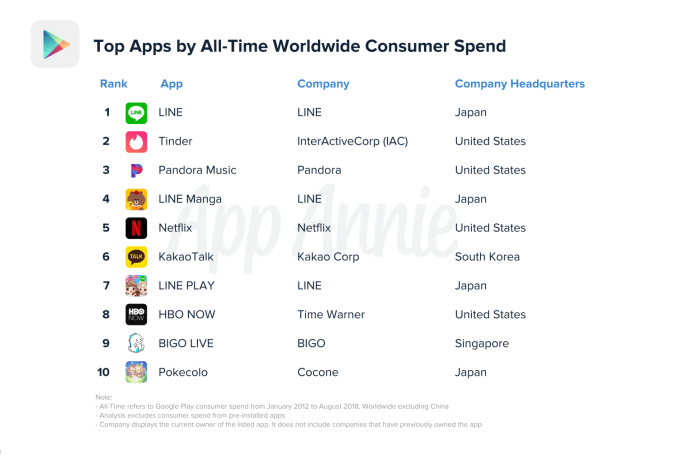
The full report is available here.
